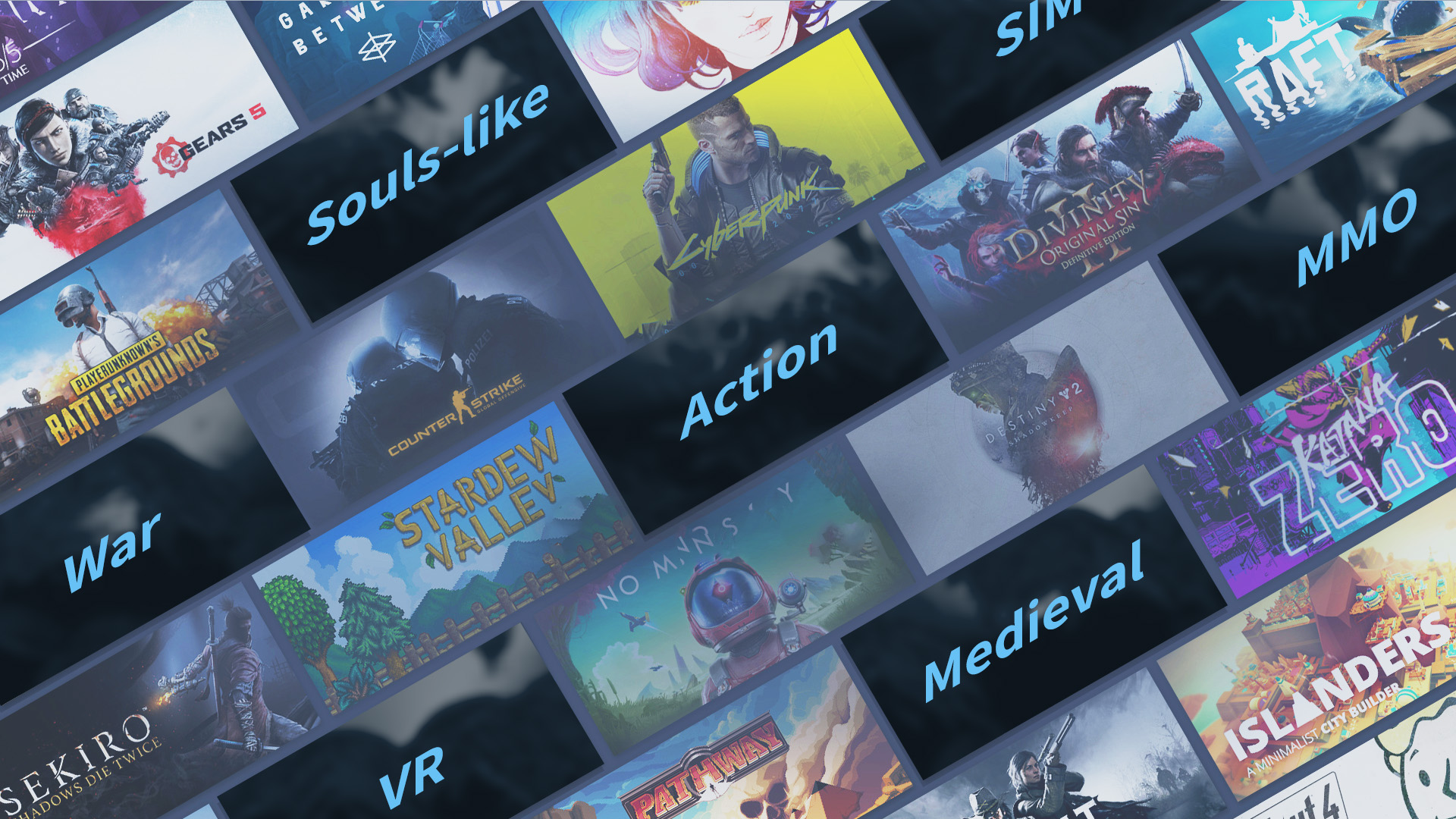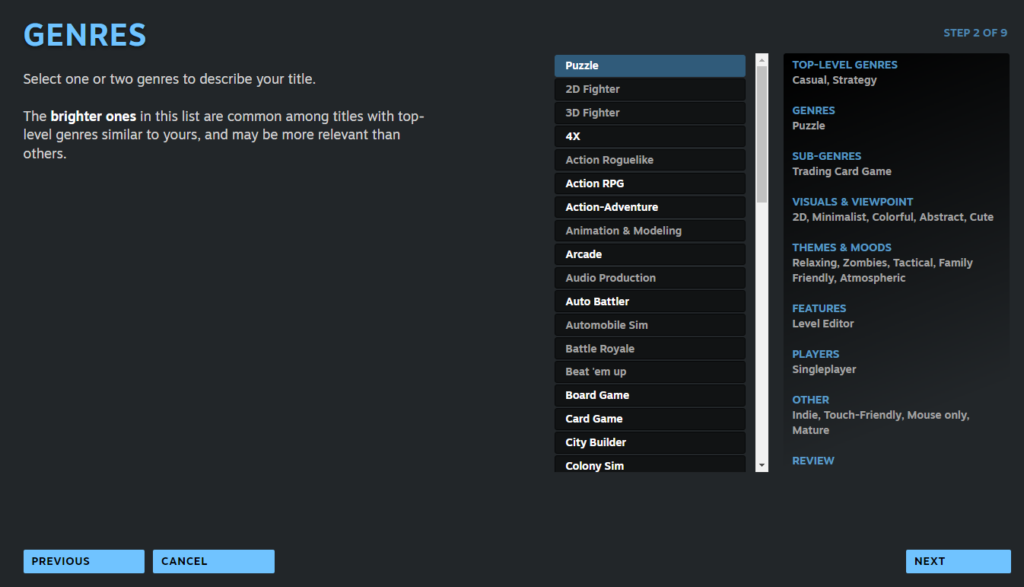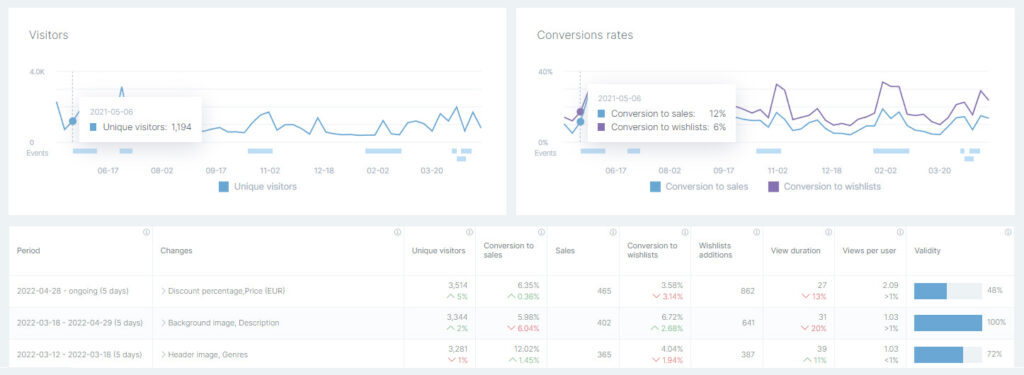Choosing tags that drive discoverability
- April 28, 2022
- 3:41 pm

Steam tags are one of the main drivers of discoverability for your games on the platform. They help players learn about the basic elements of your games, such as their genre, visual properties, themes & moods, as well as features, and allow the store’s algorithm to determine where your games will be displayed. Steam thus requires a game’s store page to feature at least 5 tags before launch. Yet, the platform recommends adding up to 20 tags (most successful games make use of all 20 tags spots). This helps Steam users to better find your games when they are browsing genres & categories, searching with tags, exploring tag-driven recommendations, and utilizing tag-driven dynamic collections. When it comes to applying tags for your games, there is a lot of advice floating around. We took a look at Steamworks guidelines as well as tips and tricks from industry experts to provide you with a list of the most important things to consider when building tag compositions.
Research similar games' tag compositions
Before you start applying tags to your game, you should have an idea of which tags similar games use. You can do your research manually, or hop into Steam Data Suite and consult the tags tab in the Asset Comparison Tool. It will show you all tags applied by competing games and how they overlap. This will give you an overview of which tags are most relevant to you, which are most competitive, and potentially already give you an idea of how to stand out from the competition.
Use the Tag Wizard
Steamworks advises you to use Steam’s Tag Wizard to build tag compositions for your games. It walks you through the process of applying the most suitable tags in a 9-step selection process, consisting of selecting:
Weigh tags by relevance
After walking through the Tag Wizard tag selection process, it is important to accurately weigh tags by relevance so that those tags that are best at capturing the essence of your game are mentioned first. The weighting is done by ordering your tags, which means more relevant tags should appear first. Since Steam moderators and players with non-limited accounts can also apply tags to your game, your initial tag composition’s weighting can change over time. You can adjust the order of tags at any time using the Tag Wizard.
Only consider approved tags
When building a game’s tag compositions, it is important to consider that Steam’s Tag Wizard only lets you choose from an approved list that doesn’t include those tags generated by members of the community. If you want to emphasize the relevance of non-approved/custom community tags, it is possible to game the system to a certain extent. Tom Francis, the developer of Gunpoint and Heat Signature, explains how: “What tags people add to your game affect when it shows up in various places, most notably on other games’ pages, or in the ‘More like this’ box,” he wrote. “How many people applied each tag matters, and as the game’s developer, you have a secret superpower to boost this. If you’re logged into Steam with the account you use for Steamworks, when you go to your own game’s store page and add a tag, it counts extra — the official docs don’t give a figure, but I think I heard you count as 50 people.”
Know the algorithm
Marie Dealessandri of gamesindustry.biz revealed a couple of useful insights in her piece on “How to get the most out of your game’s Steam page”. For one, she explains that since the rollout of Steam’s tag query expansion in 2020, the search algorithm includes logically connected tags when players search for a game: “If your game has the tag “RTS”, someone looking for a game with the tag ‘Real-time’ or ‘Strategy’ would now be able to find your game. Learn more about Steam’s query expansion.
Don't weigh generic tags high
There are many mistakes you can make when applying tags. A very common one that Chris Zukowski from howtomarketyourgames.com points out is that many developers chose too generic tags as the five most weighted ones to describe their game, such as indie or action. This greatly inhibits your game’s chances to get high-quality traffic from recommendations widgets such as the “More like this” widget or the “Similar to games you’ve played” widget. Assuming it is even able to get featured through a generic tag such as “indie”, chances that it has strong similarities to other games in the list, based on such a broad property, are fairly low. You should therefore try to weigh those tags higher that are capable of accurately representing the main characteristics of your game rather than top-level genre tags.
Be cautious with divisive tags
Tags which imply that your game features brutality or even gore-esque elements can be detrimental to its discoverability, as users with an aversion to violence are likely to filter out these tags when searching for games. So if your game only slightly features violence, think about omitting this tag. If you’re uncertain this is the way to go, we advise you to apply the tag for a limited period of time and monitor your games’ store page discoverability performance in Steam Data Suite. We’ll explain how later in this post.
Review your tags regularly
As players are free to suggest tags to your game, you should periodically review which ones have been added. The majority of Steam users are likely not familiar with how the tag system works, and could therefore apply too generic tags to your games. If many players do so, these tags will get more relevance, and could harm your game’s discoverability. Another reason to regularly reinspect your game’s tag composition is that Steam keeps updating its list of tags to account for newcomer genres, sub-genres, features, as well as visuals and themes. The new tags might help you to more precisely define your game so it becomes easier to find for users.
Use the Tag Explorer
Steam’s Tag Wizard is a sound tool to build a game’s initial tag composition. It does, however, lack key insights that help you determine the actual popularity and competitiveness of a tag. With popularity, we mean the indexed popularity as calculated based on the popularity of all games that use a specific tag. Similarly, a tag’s competitiveness is based on the number of games that use the tag. Essentially, you can help your game stand out by equipping it with highly popular ( ≥70%), but less competitive tags. This will especially help your games stand out when players are using more narrow search terms. For example, the tag “Violent” scores very high on popularity (100%), but less on competitiveness (61%), making it a very interesting tag to consider if relevant to your game (But be careful with divisive tags as mentioned earlier). Conversely, the tag “Funny” scores low on popularity (26%) but fairly high on competitiveness (62%), demonstrating its low potential for driving discoverability. With Steam Data Suite’s Tag Explorer you can browse through all available tags on Steam.
Monitor the effect of changes to your compositions
Absorbing all the tips & tricks on how to improve your games’ discoverability through optimizing their tag compositions is one thing, but you still need to verify if the compositions you built or the changes you made to existing compositions have the desired effect. We therefore advise you to monitor your games’ discoverability performance metrics, i.e. store page visitors, views per user and view duration in the period after implementing the changes. The easiest way to do so is with the help of Steam Data Suite’s Store Page tool. The tool automatically detects any changes you have made to your store page and reports the most relevant performance metrics. Test the tool by signing up to our free trial.
We’ll be happy to get your feedback about our insights, tools, and features at info@steamdatasuite.com.


